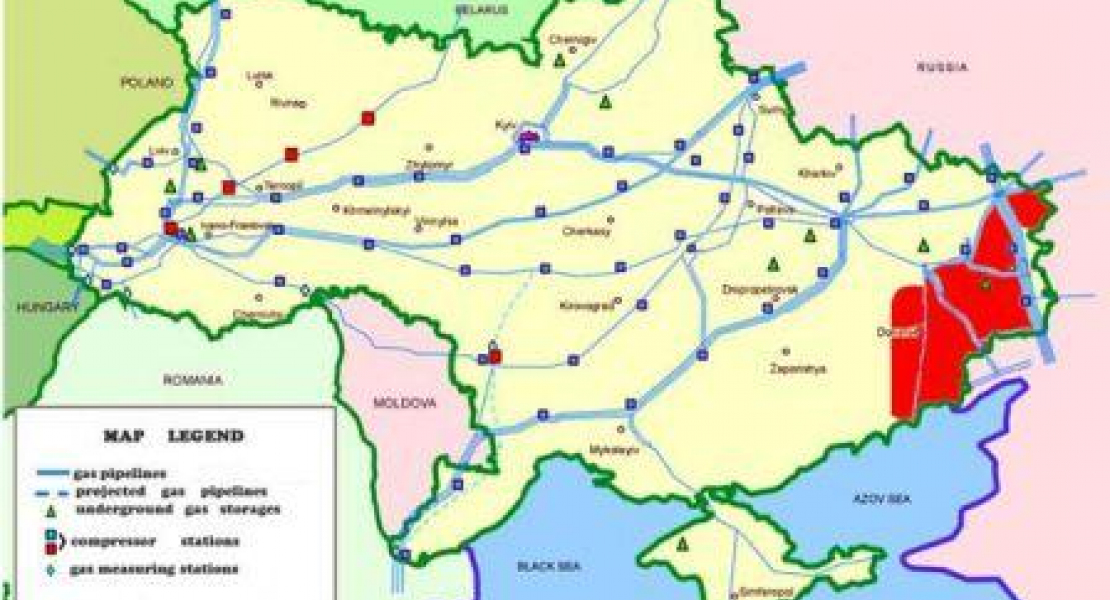The Ukrainian gas transportation system (GTS) is a crucial component of the European gas infrastructure, which accounts for supplies of up to a quarter of the total amount of natural gas consumed in Europe on an annual basis. A substantial portion of Ukraine’s south-eastern regions has found itself in an instability zone caused by a conflict between the Russian Federation and the new Kyiv authorities. This instability zone threatens the integrity of Ukrainian GTS, as some of its structural elements might be damaged as a result of military activities, or the Ukrainian government might eventually lose control over some of its parts.
However, various parts of the Ukrainian GTS do not have the same significance for the sustainability of natural gas transit within Ukraine and towards the EU. Which components of Ukrainian GTS have the most significance for gas transportation? Do the combat operations in the south-east of the country have potential for threatening the security of natural gas transit through Ukraine?[1]
The network analysis method offers answers to all of these questions. A simulation of the Ukrainian GTS and analysis of its structure show that nodes most important for the stable operation of the network are the gas compressor stations located in the vicinity of the village of Shebelinka, in the Balakliia Raion of the Kharkiv Oblast, and the urban village of Dashava, in the Stryi Raion of the Lviv Oblast. Any suspension or damage of these stations may either seriously hinder the intake of Russian gas into the Ukrainian GTS (the Shebelinka station) or virtually completely halt natural gas transit to European consumers (the Dashava station).
As of today, the area controlled by separatists and sites of clashes between separatists and the Ukrainian regular army are more than 300 kilometers away from Shebelinka and more than 1,000 kilometers away from Dashava; therefore, there is no direct threat to the integrity of the Ukrainian GTS. However, the very fact that there is an instability zone in relative proximity to a point that is crucial for the operation of the Ukrainian GTS makes the creation of a special unit responsible for the protection of the Ukrainian gas transport infrastructure increasingly relevant. Such a unit can be established on the basis of “Scorpion”, an operational guards unit of the Ukrainian Special Forces that is responsible for the protection of the nuclear facilities located in Ukraine.
At the same time, given the organizational challenges that the Ukrainian army has faced recently, additional support in the creation of such a specialized unit can be provided by foreign specialists experienced in the protection of energy infrastructure. Experts at the United States Department of Defense could offer such support, since the U.S. Army has a wealth of experience in the protection of the Iraqi oil infrastructure. Further, peacemaking troops could also be involved in the protection of gas transport facilities, provided they are sent to Ukraine and given a relevant mandate.
[1] Admittedly, the hostilities in the south-east of Ukraine are not the only threat to the transit of natural gas through its territory and the energy safety of Ukraine. A whole new challenge is the construction of the South Stream project to transport natural gas from Russia to Western Europe bypassing Ukraine. The current situation and potential risks will be addressed in one of BISS’s upcoming research papers.


